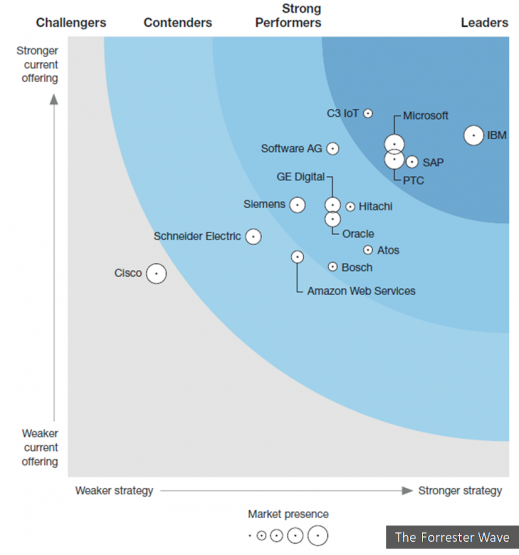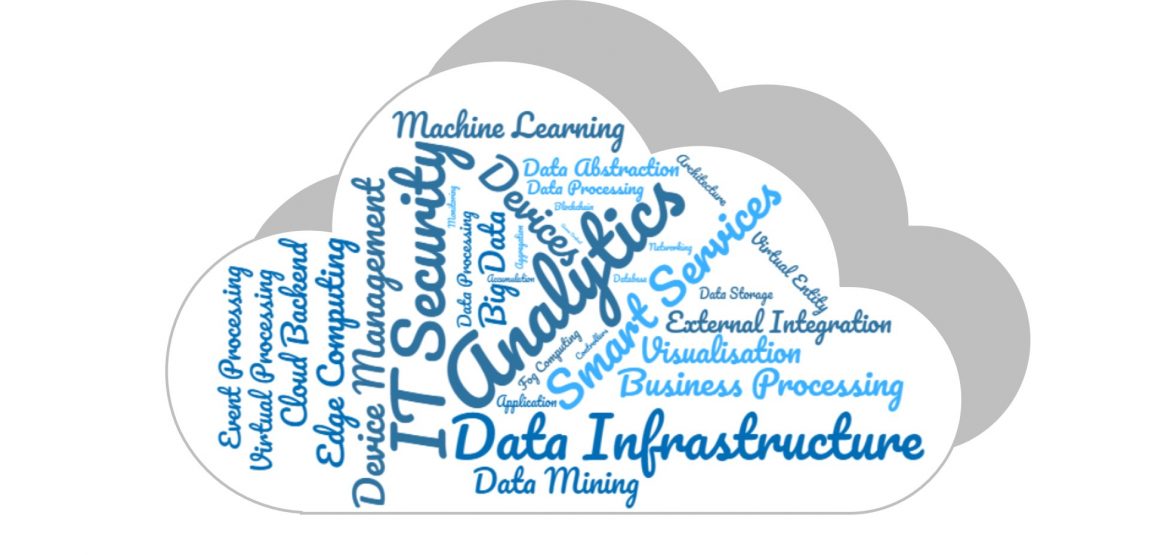18. April 2019
For example, some scientific paper identify five layers to locate the specific IoT technologies [1] while others use seven layers [2]. Descriptions as well as the arrangement of functions also differ. Beyond the simple arrangement of functions in the form of layers, other papers conceive architectural models with vertical and overlapping elements [3, 4].
Figure 1 illustrates the fundamental differences by comparing two models. The example on the left shows a simple stringent structure with unambiguous interfaces [1]. The example on the right, on the other hand, shows a networked structure that differs significantly in the number and arrangement of the elements [3].

Figure 1: Comparison of two IoT platform architectural models [1, 3]
Other reports such as the ones by the market research institutions Gartner, The Forrester Wave, IDC MarketScape or IoT-Analytics, even go a step further: They evaluate certain aspects of IoT platforms according to standardized criteria and use the results to group IoT platforms into categories. For example, The Forrester Wave uses 24 criteria divided into topics like platform functionalities, strategic orientation and market position for evaluation purposes. Depending on how the IoT platforms perform in this assessment, they are then assigned to the following categories: ‘Leaders’, ‘Strong Performers’, ‘Contenders’ and ‘Challengers’. Figure 2 illustrates the result, which shows all the providers surveyed in one diagram.

Figure 2: The Forrester Wave: Industrial IoT Software Platforms, Q3 2018
As a user, your company is now faced with a variety of questions: How can I connect my industry 4.0 application to generate the greatest benefit? The requirement is networking across application and system boundaries in order to generate and process information and thus use knowledge for the development of digital products and services. This all-encompassing connectivity is made possible by IoT platforms. But because there are no uniform definitions of IoT platform functions, it is difficult to find the right way to connect information technology. In our market study, we will jointly develop a description model of IoT platforms that will enable you to understand the functions and thus exploit the full potential of your application. Our goal is a practice-based presentation that describes the necessary and possible functions of a platform based on industrial applications.
Which is the best platform for my organization? This is also not an easy question to answer. Comparing available studies, it soon becomes clear that the respective platforms perform quite differently in the various studies. Strengths and weaknesses of IoT platforms have divergent effects in distinct evaluation schemes. Trying to classify all platforms into a single evaluation scheme, as many other studies advocate, does not seem to be effective either. One reason for this is that different users have different requirements and expectations of an IoT platform. Therefore, these results would only help your firm to a certain extent.
As investigated above, there does not seem to be a practical and comprehensive scheme used to select IoT platforms on the current market. For this reason, the Center Connected Industry intends to develop a practice-based description model together with your company in the context of our IoT platform study. On this basis, we will design and validate effective selection criteria. As such, a practical selection procedure for your company is developed in the context of industrial applications.
Take part in our study and seize the opportunity to actively connect your applications!
[1] Kurbach, U.: Device Clouds: Cloud-Plattformen schlagen die Brücke zwischen Industrie 4.0 und dem Internet der Dinge. In: Handbuch Industrie 4.0; Bd. 3: Logistik. Hrsg.: B. Vogel-Heuser; T. Bauernhansl; M. ten Hompel. 2. Auflage. Springer Vieweg, Berlin 2016, S. 181‑200.
[2] Green, J.: [Whitepaper] The Internet of Things Reference Model. Hrsg.: CiscoChicago 04.06.2014.
[3] Nettsträter, A.: Internet-of-Things Architecture. IoT-A 07/2012.
[4] Krause, T.; Strauß, O.; Scheffler, G.; Kett, H.; Lehmann, K.; Renner, T.: IT-Plattform für das Internet der Dinge (IoT). Basis intelligenter Produkte und Services. Fraunhofer Verlag, Stuttgart 2017.


